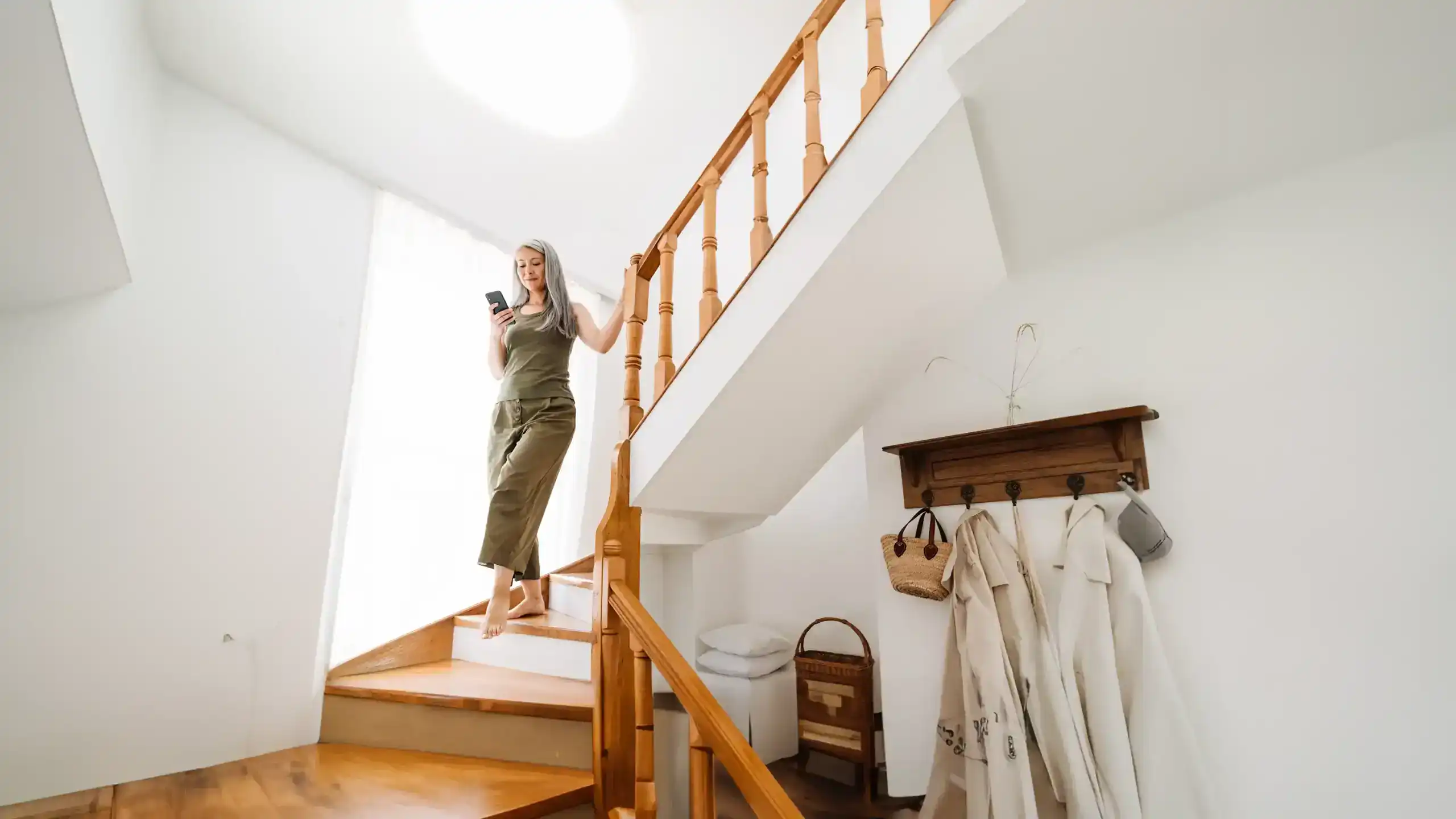We at Gondola also want to make therapy easily and conveniently accessible from home.
In addition to the concern raised by the direct impact of COVID-19 infection on the health of patients, the current global crisis has brought with it a number of indirect, but no less serious, consequences caused by social isolation and limited access of patients to health services. Since the onset of the pandemic, physical activity and rehabilitation, two pillars of Parkinson's disease treatment, have been severely curtailed in most countries, with serious consequences on patients' physical and mental health.
According to a recent publication in Nature NPJ PD, 10-28% of Parkinson's disease patients, although they did not directly contract Covid-19, reported a worsening of their physical symptoms due to the drastic reduction in mobility induced by lockdown (1).
The effects of self-isolation on psychological well-being were also significant: indeed, in about 30% of PD patients we witnessed a marked deterioration in emotional state, with considerable aggravation of disorders related to depression to anxiety states (1,2).
With the emergence of social distancing as the new behavioral standard of reference, the demand for therapeutic strategies that enable them to be carried out directly at home, without the direct intervention of a professional, is to date growing dramatically.
The general trend of the last decade, related to the development of personalized medicine, has led-to the rapid adoption of various remote rehabilitation (or telerehabilitation) approaches aimed at treating symptomatology related to Parkinson's and other chronic neurological disorders. Clinical studies have shown that regular stimulation, using noninvasive stimulation techniques, at the level of different regions of the nervous system is effective in significantly improving a range of neuromotor symptoms in Parkinson's patients (4, 5, 6).
To date, telerehabilitation makes use of a wide range of technological tools that enable efficient mo-nitoring of patients and/or remote administration of therapies of different types (7). Such devices and interfaces, specifically conceived and designed for home rehabilitation, confer Unprecedented independence and flexibility to meet patients' clinical needs. Wearable sensors, for example, make it possible to quantify and track the evolution of a patient's motor performance remotely, allowing them to track a multitude of neurological and/or mo-tor parameters of high clinical relevance without interrupting their daily activities (3). Already widely used in clinical settings to assess the effectiveness of physical therapies, sensors have also long been an affi-dable resource in rural health care practice. With reliable and user-friendly systems, even effective stimulation protocols can be organically integrated into patients' lives while they are carefully and, in some cases, continuously monitored.
The development of such remote therapies has even made possible the integration of unprecedented new features that have been shown to improve the effectiveness of rehabilitation: interaction with virtual reality systems, incorporated into treatment for a wide range of neurological conditions-including Parkin-son, stroke, and Multiple Sclerosis-increases patient motivation and the immersiveness of the formati-ve experience by integrating the cognitive and motor aspects of the proposed tasks (1, 8). As a result, neurological patients nowadays can rely on a wide range of online resources that can potentially cover almost every aspect of their rehabilitation program thanks to the active support of playful scenarios and motion/pressure sensors, from activity-focused workouts (aiming to improve gait, coordination, balance, speech) to video games designed to strengthen brain connec- tions and circuits particularly relevant to memory and cognition (1, 8, 9).
When necessary, specific training sessions can be scheduled between patient and medical professional to define the appropriate ways to use the different tools involved in each specific home therapy. Much of the communication with the healthcare professional can also be managed via Apps or intuitive Internet-connected platforms, with options that include live or recorded video tutorials, as well as instructions and remote control of therapy-related pacing parameters. The continued availability of exchange with healthcare professionals as well as an online patient community helps maintain motivation and engagement in long-term therapies, especially when other factors such as the pandemic intervene hindering direct social interactions(1).
Remote rehabilitation is now considered a viable and attractive alternative to conventional medicine and is particularly recommended for patients who cannot access regular in-office therapy treatments due to COVID-19 restrictions or any other personal constraints. A recent online survey of Parkinson's patients who have experienced telerehabilitation highlighted some important advantages over conventional therapy, including easier access to qualified medical specialists, general convenience, and significant time savings (10). Telerehabilitation is recommended by a number of institutions and associations (e.g., the American Physical Therapy Association, the World Confederation for Physical Therapy, the Chartered Society of Physiotherapy, the Interna-tional Network of Physiotherapy Regulatory Authority) and has been recognized as an effective approach in improving motor, as well as cognitive, disorders associated with a large number of neurological conditions (1).
The Gondola Home Device® is designed to provide a tailored solution to patients' evolving conti-nuous needs. As such, it leverages the latest innovations and meets the challenges revealed by the COVID-19 pandemic. Because we firmly believe that increasing the accessibility and ease of use of our therapy will pave the way for a better life.
REFERENCES:
- Langer A, Gassner L, Flotz A, Hasenauer S, Gruber J, Wizany L, Pokan R, Maetzler W, Zach H. How COVID-19 will boost remote exercise-based treatment in Parkinson's disease: a narrative review. NPJ Parkinsons Dis. 2021 Mar 8;7(1):25. doi: 10.1038/s41531-021-00160-3. PMID: 33686074; PMCID: PMC7940641.
- Chaudhuri KR. COVID_19 and Parkinson's disease. Kinetic. 2020;2:4-5.
- Miele G, Straccia G, Moccia M, Leocani L, Tedeschi G, Bonavita S, Lavorgna L; Digital Technologies, Web and Social Media Study Group of the Italian Society of Neurology. Telemedicine in Parkinson's Disease: How to Ensure Patient Needs and Continuity of Care at the Time of COVID-19 Pandemic. Telemed J E Health. 2020 Dec;26(12):1533-1536. doi: 10.1089/tmj.2020.0184. Epub 2020 Jul 13. PMID: 32667839.
- Schulz R, Gerloff C, Hummel FC. Non-invasive brain stimulation in neurological diseases. Neuropharmacology. 2013 Jan;64:579-87. doi: 10.1016/j.neuropharm.2012.05.016. epub 2012 Jun 9. PMID: 22687520.
- Stocchi F, Sale P, Kleiner AF, Casali M, Cimolin V, de Pandis F, Albertini G, Galli M. Long-term effects of automated mechanical peripheral stimulation on gait patterns of patients with Parkinson's disease. Int J Rehabil Res. 2015 Sep;38(3):238-45. doi: 10.1097/MRR.0000000000000120. PMID: 26164797; PMCID: PMC4662266.
- Pinto C, Pagnussat AS, Rozin Kleiner AF, Marchese RR, Salazar AP, Rieder CRM, Galli M. Automated Mechanical Peripheral Stimulation Improves Gait Parameters in Subjects With Parkinson Disease and Freezing of Gait: A Randomized Clinical Trial. Am J Phys Med Rehabil. 2018 Jun;97(6):383-389. doi: 10.1097/PHM.0000000000000890. PMID: 29309313.
- Dobbs, B., Pawlak, N., Biagioni, M. et al. Generalizing remotely supervised transcranial direct current stimulation (tDCS): feasibility and benefit in Parkinson's disease. J NeuroEngineering Rehabil 15, 114 (2018). https://doi.org/10.1186/s12984-018-0457-9
- Isernia S, Di Tella S, Pagliari C, Jonsdottir J, Castiglioni C, Gindri P, Salza M, Gramigna C, Palumbo G, Molteni F, Baglio F. Effects of an Innovative Telerehabilitation Intervention for People With Parkinson's Disease on Quality of Life, Motor, and Non-motor Abilities. Front Neurol. 2020 Aug 13;11:846. doi: 10.3389/fneur.2020.00846. PMID: 32903506; PMCID: PMC7438538.
- Srivastav AK, Samuel AJ. E-Rehabilitation: One solution for patients with Parkinson's disease in COVID-19 era. Parkinsonism Relat Disord. 2020 Jun;75:128-129. doi: 10.1016/j.parkreldis.2020.05.021. Epub 2020 Jun 4. PMID: 32532625; PMCID: PMC7271872.
- Spear, Kelsey L. et al. ‘Patient Views on Telemedicine for Parkinson Disease’. 1 Jan. 2019 : 401 - 404.




